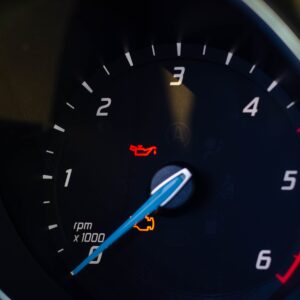When you’re slowing down on a manual transmission vehicle, it’s generally good practice to downshift as you decelerate. This allows you to have better control of your vehicle without putting too much stress on your brakes. That said, this process is more complicated than shifting to neutral and then just coasting as you brake. This also brings up some questions when it comes to technique. How to downshift in a manual properly? Can you skip gears when downshifting? Is downshifting even worth it? We’ll answer these questions in this article.
How to Downshift Properly
When you’re switching to a lower gear, the engine needs to spin at a higher RPM to account for the greater gear reduction. If you downshift without attempting to raise the engine’s RPM, the engine will surge or gain RPM rapidly as you release the clutch, causing the vehicle to lurch just a bit. This is not a big deal unless it bothers you, because engine braking works like that.
To downshift seamlessly, you need to blip the throttle right before you release the clutch. This technique is called rev matching, and it prevents vehicles from jolting as a result of the engine trying to get up to its appropriate RPM. This technique also prevents excessive transmission and clutch wear. Note though that even if you don’t do this, you won’t hurt the transmission or the clutch enough to notice a difference.
Rev-match downshifting while braking can be challenging since you’ll need to be pressing the throttle while on the brake pedal. This skill takes a bit of practice, but it’s very useful especially on the track. Off the track, you can simply drive normally and downshift intelligently.
Can You Downshift More Than One Gear at a Time?
The short answer is that yes, you can. One situation where this applies is when you’re driving at highway speeds at fifth or sixth gear but you want to slow down because you need to turn right onto an exit ramp.
It’s generally safe to skip gears when downshifting as long as you release the clutch when the vehicle has reached an appropriate speed where the selected gear wouldn’t cause the engine to surge. For example, you can shift from fifth gear to second gear as long as you only release the clutch at a speed appropriate for the second gear. If you release the clutch while the vehicle is traveling too fast, the vehicle will jolt and decelerate like you tapped your brakes. But again, this “jolt” can be reduced by just choosing a gear nearer the one you just shifted out of.
You can also downshift more than one gear and release the clutch sooner if you can confidently execute a rev-match downshift. However, this means that you need to be familiar with your vehicle. More specifically, the engine’s RPM for that particular gear and speed, plus how the vehicle responds to throttle blips.
Generally, executing a rev-match downshift is easier when downshifting one gear at a time, since you’ll only need to blip the engine’s RPM a small amount. Downshifting multiple gears will require you to blip the throttle more since the engine RPM required to match the transmission speed is higher.
Depending on your familiarity with your vehicle, rev-matching a downshift with skipped gears can be challenging. You’ll need to wait for the engine’s RPM to rise to the appropriate RPM before letting go of the clutch.
Can Downshifting Incorrectly Cause Transmission Damage?
Yes. You should never release the clutch at low gear while the vehicle is traveling at highway speeds without rev-matching.
If you’re just shifting down one gear, it isn’t as much of a problem as it is if you’re shifting down two or three gears. Always err on the side of caution. The gears in the transmission are synchronized for a reason, but you don’t need to push things too far by downshifting more than one gear at a time. If you’re in an evasive maneuver situation though, all bets are off. Just get it stopped and off the road as quickly as you can.
As previously mentioned, downshifting incorrectly will cause the engine to surge and the vehicle to jolt.
When this happens, you’ll also be putting a lot of stress on the clutch and gearbox. While downshifting incorrectly might not cause immediate failure, it can cause the clutch and gearbox to wear out a little faster.
Pro Tip: Clutches and gearboxes are robust and meant to last the life of the vehicle, and usually they do.
Downshifting incorrectly will also cause your vehicle to decelerate suddenly. This can be like slamming on your brakes on the highway, which could be dangerous because you are slowing very suddenly without a brake application, and there will be no brake light illumination to tell other drivers what you’re doing. Crashes happen when one driver does things other drivers don’t expect.
For everyday driving, doing a rev-match downshift is okay when you’re slowly decelerating, such as when you see an intersection far ahead. You shouldn’t rev-match downshift when you’re braking hard, such as when you’re reacting to a pedestrian crossing the road. In these emergency scenarios, it would be better to just slam on the brakes and press on the clutch just to stop the engine from stalling.
Any information provided on this Website is for informational purposes only and is not intended to replace consultation with a professional mechanic. The accuracy and timeliness of the information may change from the time of publication.




















